|
The Windows want to
install the driver for USB connect ,click to download the
driver of
Amanero
combo 384
Price:
( Exclude shipping cost)
D-27.28: USD1399
(Dual ES9028Pro)
D-27.38 standard version: USD1599 (Dual
ES9038Pro,Femtosecond
TCXO *3 )
D-27.38 Full upgrade version: USD1698(Dual
ES9038Pro,Femtosecond
Accusilicon *3upgrade the stock clock and Femtosecond Crystek *2
upgrade on USB interface,USB isolator and separate power supply for
USB interface)
Please send your address, name
to audio-gd@vip.163.com
get the quote.
Accusilicon clocks:
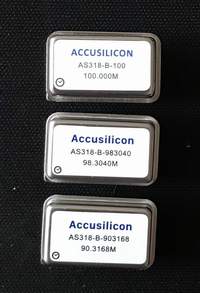
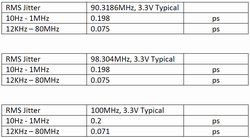
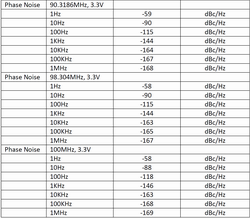
Crystek clocks:
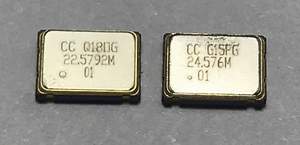
Since Dec. 2018, the model had upgraded
two pc OPA+transistor serve PSUs to improved the sound quality.
The different between
dual ES9038 Pro and single ES9038 Pro is large:
The different not only the DNR, but the
dual ES9038 Pro working under mono mode, the channel crossing is
improve and offer a larger and exact sound stage.

Dual ESS9028 Pro, working under mono mode, its DNR had 3DB better
than single ES9038 Pro .

The FPGA is
important in the D-27:
The FPGA is
Programmable Array Logic.
Nowadays the FPGA had
applied in a lot high end grade DACs,
like the popular ROCKNA WAVEDREAM DAC.
Its internal hardware construction can through the
complex software design and arrangement , be upgraded through the
software upgrade.
Upgrade to the firmware is the same as same as upgrade
to the hardware. That design is much more flexible . It can
improve on sound quality and add the newest functions , it can
never become out of date.
What the FPGA duty
in the D-27:
1,
Separate the data feed to dual ES9038 Pro for working in mono mode.
2, Clock re-clock process and FIFO design for all inputs
, the output data can exact synchronisation with clock signal,
reject jitter.
3, Built in high performance SPDIF interface
, bypassing low performance SPDIF interface
of the ES9038 Pro .
Full discrete output stages:
The
signal last stage is the analog output stags , they greatly effect
the whole DAC sound
quality.
The output stages working after ES9038 pro, they are full
discrete transistor built with hole parts but not SMD parts
.
The high speed ACSS amps
work as the signal gain and processing , they are of non feedback
design and working in current signal mode . the dual ES9038 pro
output [current signal] goes through the ACSS amp
.I don't like other design with multiple conversion to the signal
between current and voltage.
The output buffers are the pure class A design , built
with 8 pcs 150W
(in total 1200W ) on every channels, to drive the most headphones
without difficulty .
In our design output stages working in pure class A ,
and without any negative feedback for the most pure and life like
sound reproduction .
There are 4 pcs OPA built
in as DC serve , so the DAC can
working well without couple caps and output the most neutral sound.
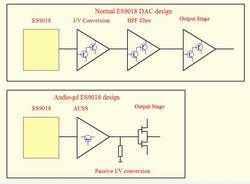
Heavy power supplies design:
The DAC has
3 high quality low noise, low flux leakage, R-cores transformers.
In total 130W power to supply all digital parts and the
left and right analog boards.
The digital parts DC power is distributed by 15 ultra
high speed low noise PSUs,
they are double stages PSUs .
The analog parts DC power is distributed by 4 groups PSUs ..All
are pure class A low noise regulated power.
This results in ultra-high speed and ultra-low noise
performance. Clean and independent power to achieve highest quality
of sound .
Volume control:
The volume
control is also different from conventional technology. Conventional
volume control technology implements volume
control the
analog input stage through a volume pot to reduce the signal . The
volume pot quality effects the sound quality directly , the low
quality volume pot cause loss of detail and couse channels
imbalance and sound stage distortion . Even the high performance
volume pot still cause loss of detail . Whatever quality volume pot
still can cause the S/N degradation .
But in the D-27 , we applied the I/V conversion volume control , the
volume control is a variable
passive I/V conversion placed at the ACSS amp
output , where
the output is the current signal mode not in the voltage signal
mode . The volume control is I/V conversion, and the volume depends
on the current (I) conversion to the voltage (V). (Like R-2R D/A
chips output passive I/V conversion) It
can keep the signal frequency band flat and not lose any detail. It
want degrade sound quality regardless of volume level . After the
volume , there are four groups diamond
non-feedback buffer output stages offer with very low output
impedance .
The volume control quality is. even more
important in the real balanced gear . It must guarantee the four
channel signal control to be exact and achieve the performance of
the real balanced gear . If the cool and hot of the balance signal
can't be exact, the balance output will has large distortion and
cause the sound quality and performance to be even worst than a
single end gear . ( whole idea behind balanced design is wasted)
In D-27 is applied a four channels digital control
relays based volume control. .D-27 has total four channels of the Vishay resistors
to control volume and avoid channel imbalances . This achieves the
best performance and sound quality.
D-27 has 100 steps volume control with range
that achieves 90DB (usually the step volume have around 70DB range
), very smooth control range on first 50 steps , along with 13DB
high gain can be very easily adjusted for both high / low
sensitivity headphone and speakers. While users change the volume,
the different relays break or close, it may has a slight switch
sound on output but disappears when you stop adjusting volume.
Supper
Exponential volume characteristic
Volume steps comparison to normal volume knob
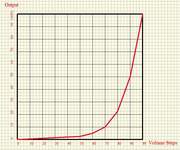
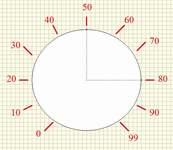
The overall arrangement :
The DAC had
separate the digital, Left analog, Right analog and power
transformers parts, every part is separated by 5MM thick aluminium boards
to avoid distortion.
The Left and Right analog parts have been symmetrical
placed beside the digital parts , to keep the wires and distance
same . This allows sound stage to be more precise .
The sound quality adjustments :
Some
people may don't like the sound of ESS chips.
They are consider to sound artificial . We want to change this
perception .
At first we want to let the unit fully burn in, then
adjust the parameters layout and design to lower the distortion
to absolute minimum . This is easy part..
Then we have to spend a long time on listening tests
and constantly comparing sound quality . Than we adjust the
parameters to change the Odd and even harmonics to let the sound be
life like and palpable.
At the end the DAC may
not have least amount of distortion but has the most neutral sound
with life and realism. |

